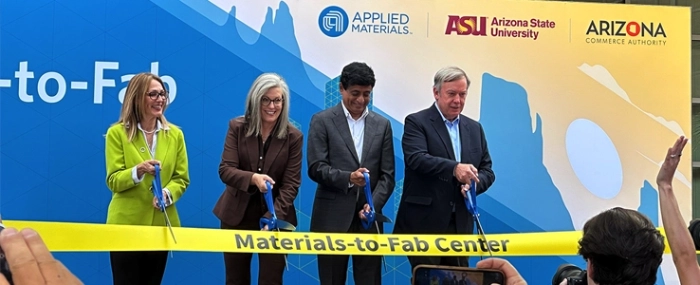
Applied Materials and ASU open $270M semiconductor research centre in Arizona
Applied Materials and Arizona State University have officially opened the Materials-to-Fab Center, a USD 270 million research and prototyping facility aimed at accelerating innovation in semiconductor manufacturing.
Located within ASU’s MacroTechnology Works complex in Tempe, the new centre will allow industry and academic researchers to collaborate on technologies that move new chip ideas more quickly from concept to prototype.
Applied Materials’ Semiconductor Products Group president Prabu Raja and ASU president Michael Crow attended the ribbon-cutting alongside Arizona governor Katie Hobbs and other state officials.
ASU president Michael Crow said the initiative would strengthen U.S. competitiveness in chip manufacturing and national security. Raja described the facility as a platform to connect Applied’s technologists with university researchers and industry partners to advance chip technologies critical for AI and high-performance computing.
“The work of advancing discovery and with it, the American semiconductor manufacturing industry, is of vital importance to the nation from both an economic competitiveness and a national security perspective,” said Arizona State University President Michael Crow, in a press release. “The alliance between a global industry leader like Applied Materials and a leading research university like ASU and the work that will be done in the Materials-to-Fab Centre will lead to breakthroughs and acceleration that enable chip manufacturers in the United States to lead the world in developing the technology that we need today and in the future.”
The Materials-to-Fab Centre expands Applied Materials’ existing collaboration with ASU and supports projects funded through the federal CHIPS and Science Act, including the Southwest Advanced Prototyping (SWAP) Hub and SHIELD USA advanced packaging initiative.
Applied Materials is also developing a new facility in Chandler as part of its broader U.S. manufacturing footprint, which includes sites in Texas, Massachusetts, and Montana.
